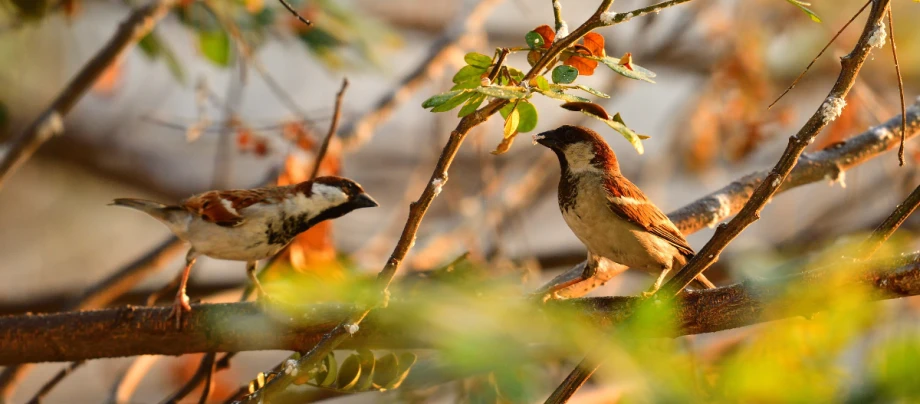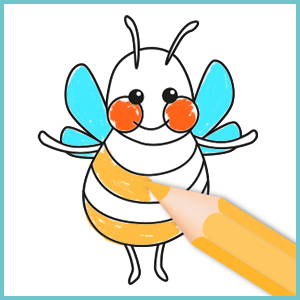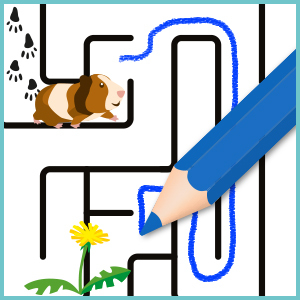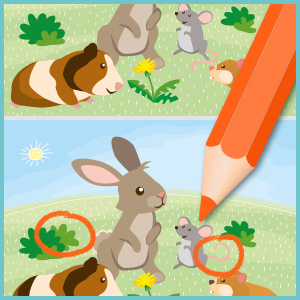A garden full of happy birds and buzzing insects
28.02.2023 - Reading time: 8 minutes

Do you like watching wild birds? Observing their clever flying manoeuvres and listening to their chirping simply puts you in a good mood. Did you know how you can attract lots of birds onto your balcony or into your garden? By offering them something delicious to eat and drink and providing them with a hiding place. The same applies to insects: the hardworking creepy-crawlies are happiest in gardens which have been left as natural as possible where they can find food and places to hide. The fantastic side-effect of this is that you’re doing something to support biodiversity and conservation!
Why is it important to feed wild birds?
Feeding birds is a lot of fun! The animals can build up a great deal of trust if they feel safe while they are eating at feeding stations in the garden or on your balcony. After only a small amount of time, it no longer bothers them if you watch them while they’re feeding. But why is it that wild birds aren’t able to find enough food for themselves?
Previously, people tended to only feed wild birds in the late autumn and winter. It’s easy to imagine why birds struggle to find food in the winter when everything is covered with a thick layer of snow: bushes and trees have no fruit and the grains and seeds that they eat for the rest of the year have all been eaten up, or are hidden by the snow. Since the majority of insects hibernate in the winter, birds which eat insects also come away empty-handed. So it’s clear: the hungry beaks have to be fed.
However, in recent years it has become increasingly difficult for wild birds to find sufficient food in the spring and summer, too. Many species of insects have become extinct and the variety of plants has also declined. That’s why it’s great if you provide food and snacks all year round. Take care not to offer too much food at once in the summer. During the summer, birds are also able to find natural food sources so it can mean that your food goes bad and upsets the wild birds’ stomachs – and you definitely don’t want that to happen of course!
With the help of your parents, find a spot in your garden where birds can find the bird feeder quickly. It’s best if the area is either in the shade or semi-shade and protected from the wind and rain.
To ensure that your wild birds do not become ill, you need to clean your bird feeder regularly. The best thing to do is to clean it out regularly with hot water, with the help of your parents. Of course, you can also put up several bird feeders or feed dispensers.
Do you want to birdwatch?
Are you interested in finding out more about birds? Then make yourself a birdwatching book: assign each double page to a bird species and note down when you have spotted the bird, what it eats and all of the characteristics that you notice. You can also take a photo of the bird with a mobile phone – in time, you’ll become a proper bird expert. To find out which bird it is, you can get a book about native bird species from the library. You can also find lots of great bird pictures on the internet.There are even mobile phone apps which can recognise birds from their song or from photos!

What do you need a birdbath for?
In most residential areas it isn’t that easy for birds to find water. But, just like us, birds need water to survive. That’s why they’re especially happy if you put a birdbath in your garden. Did you know that many birds don’t just use birdbaths for drinking, but also for bathing? That means that you can watch them having a bath – which often looks very funny. But because birds also use your drinking trough as a public baths, it’s very important that you also refill the birdbath with fresh water regularly and clean it with hot water. As you aren’t running a swimming pool and there is no chlorine in the water, if you don’t do this, infectious diseases can quickly spread. And do you know what else is great about a birdbath? Insects like beetles, dragonflies and butterflies also like to drop by for a drink!
What are nesting boxes?
Nesting boxes help many birds: during the breeding season, the bird parents can incubate their eggs and raise their chicks in peace and quiet, protected from enemies. This is a huge relief for them. Maybe you have observed bird parents before? They truly have their hands full and are pleased when they don’t have to build a nest as well. In the winter, nesting boxes offer a hiding place for other animals: small animals such as dormice and bats like to use them as cosy dens. If there aren’t any trees with cavities in them or other hiding places in your garden, nesting boxes are a very good idea. To avoid scaring the birds, it’s best not to go near to the nesting box during the breeding season. When the breeding season is over, you can clean the box as it will be needed for the winter. Thoroughly brush it out and rinse it out with hot water. When it has dried out, dormice or bats can move in. They also aren’t keen on being disturbed – therefore it’s best to wait until February to prepare the nesting box again for the next breeding season.
What is a bug hotel?
Do insects go on holiday? Do they check into bug hotels and spend the afternoon by the pool? Of course not! But they feel as comfortable in a bug hotel as you do in a luxury hotel. The great thing is: with a bug hotel, you are helping to protect insects and to save many species from extinction. Nature has changed massively, meaning that there is little natural habitat left for insects. In the hotels they can build nests in peace, but also hibernate.
Imagine this: a bug hotel has different sections and rooms, since each of the animal guests has its own needs. It’s therefore similar to a hotel for people. Wild bees, bumblebees and butterflies are particularly fond of bug hotels! As insects need warmth, it’s best to put your bug hotel, with help from your parents, in a place which gets the sun all day. Then it will be warm and also generally not too windy for the insects. Doing this also means that the bug hotel will dry out more quickly when it has rained and it won’t cool down as quickly in the winter. As a result, the insects stay warmer which makes them healthier and more active. In addition, the little larvae need lots of sun and warmth for their development so that they can hatch in the spring.
Don’t place your bug hotel directly on the ground, but preferably on a ridge raised a metre above the ground. This will protect your hotel from ground moisture. To ensure that enough nectar and pollen is available for them to feed on, it’s a good idea to position it close to plants which are rich in flowers. Bees, for example, love fruit trees, ivy and clover. Butterflies and flies particularly like having elder or lilac nearby.

Don’t be scared of bees!
By the way, you don’t need to be scared of bees: they actually only sting if they want to defend themselves or their hive. If you want to approach a bee, then make sure that you move extremely quietly and carefully so that the bee doesn’t feel threatened and sees no need to sting. Bees are very important for nature: they fly pollen from one flower to the next and pollinate plants in doing so – meaning that they are able to reproduce. Plants can only be pollinated in two ways: either it is done by the wind or by animals such as bees, flies, wasps, beetles and sometimes even birds or bats. But it’s not just about flowerage, as you might think: fruit, berries, vegetables, grain, maize – in short, over 75 per cent of our cultivated plants that we need to survive rely on pollination by bees. If we were to lose the bees, that would be a catastrophe for us!
How you can turn your garden into an adventure playground for birds and insects
- Put up several bird feeders and clean them regularly.
- Install nesting boxes and help birds during the breeding season and small animals during hibernation.
- Provide a bird and insect bath.
- With a bug hotel you can offer many small guests a hiding place.
- Talk to your parents about a bird and insect-friendly garden which has hedges, nesting material, wild flowers and grasses to enable your little friends to feel comfortable all year round and have enough food to eat.
Our craft tip: Are you familiar with our my pet and me paintable bird feeders and nesting boxes? Assembly is very straightforward and the paints and brushes are included in the set. This means that you can create bird feeders or nesting boxes for the birds that look great too!
Deep in the Labyrinth
How the hell do we get out of here? Your favourite animals need you: Lead them straight out into the open!



